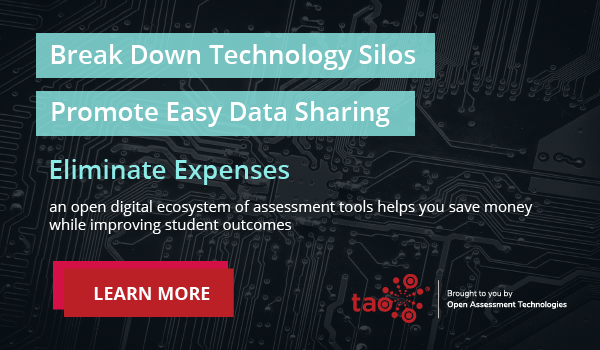“One-size-fits-all” is no longer an applicable approach to higher ed technology. Modern EdTech must be not only scalable and secure, but work with both the mandated and innovative needs of private and public institutions.
Integrations have long been the answer here. However, higher ed institutions are calling for more complex integrations to support next-generation outcomes. The need for blended learning courses and meeting students’ accommodations also play a crucial role in these emerging requirements.
To continue pushing innovation and personalization, higher ed technology leaders must establish a plug-and-play EdTech ecosystem. Such a system enables seamless integration and data exchange between learning tools, content, assessment platforms, and accessibility technologies – empowering institutions to do more with tech possibilities.
How to Establish a Plug-and-Play Ecosystem
How do you establish a plug-and-play ecosystem at your organization? First, keep in mind that plug-and-play interoperability doesn’t always translate to a completely open system, where you can add integrations as needed.
Technically, higher ed institutions can achieve interoperability in two ways: by containing their tech stacks to a monopolistic platform or by establishing a framework of open data standards set by internationally recognized EdTech leaders, such as IMS Global. Only the latter option is truly open for many integration options.
If you prefer flexibility — and wide range of choice of innovative products — we suggest three interoperability standards that will enable an open architecture of your higher ed technology system.
Learning Tools Interoperability (LTI®)
The LTI® standard is a gateway into an interoperable ecosystem, acting as the industry standard for integration between learning tools and software. The framework acts as a single point of integration for all tech within a system.
The standard adds the following capabilities to your EdTech stack:
- Aims to connect and share data between any LMS to any tool or application.
- Enables easy connection to virtual classrooms or domain-specific learning engines.
- Offers a superior user experience at a lower total-cost-of-ownership.
Within an LTI®-enabled framework, end-users can take advantage of many innovative higher ed technologies and applications that work together to advance instruction and learning.
Question & Test Interoperability (QTI®)
The QTI® standard turns what EdTech could previously do on its head. Technology-enhanced items within the QTI® framework deliver a more interactive and engaging learning experience.
Within a QTI-enabled framework, higher ed institutions can take advantage of:
- Assessment item type and test results that directly inform test content, LMSs, and test delivery platforms.
- Assessments that better reflect daily instruction and individual mastery.
- An online testing environment that is accessible to all students.
The dynamic higher ed technology tools within a QTI®-supported environment play an integral role in connecting assessment to learning, while meeting the accessibility needs of students.
The Competencies and Academic Standards Exchange (CASE®)
The CASE® framework enables secure data extraction and exchange. The standard aims to integrate educational competencies or academic standards with direct student outcomes.
The CASE standard delivers the following capabilities to an EdTech environment:
- Access to data from locked or otherwise inaccessible HTML, PDF or spreadsheet formats.
- A machine-readable format for all data within the network.
- Easy exchange of data between tools and applications within the system.
The CASE® framework enables alignment of results across multiple higher ed platforms to set standards. This allows instructors to better understand test outcomes and compare them to benchmarks, while delivering assessments that better respond to students’ needs.
The Future of EdTech in Higher Education
The IMS Global standards work together to enable an interoperable ecosystem. Within this framework, higher ed technology products are easier to integrate with other standards-based applications, freeing IT staff and administrators from having to follow tedious manuals to set up various proprietary systems. When these technologies work within the same interoperable ecosystem, time and cost of tech integration goes down to zero.
Innovation plus lower technology costs across the organization is the future of EdTech. Once you establish a standardized framework, you enable increased data exchange and connection with your motivated suppliers, and your institution will achieve better instruction and learning outcomes.

